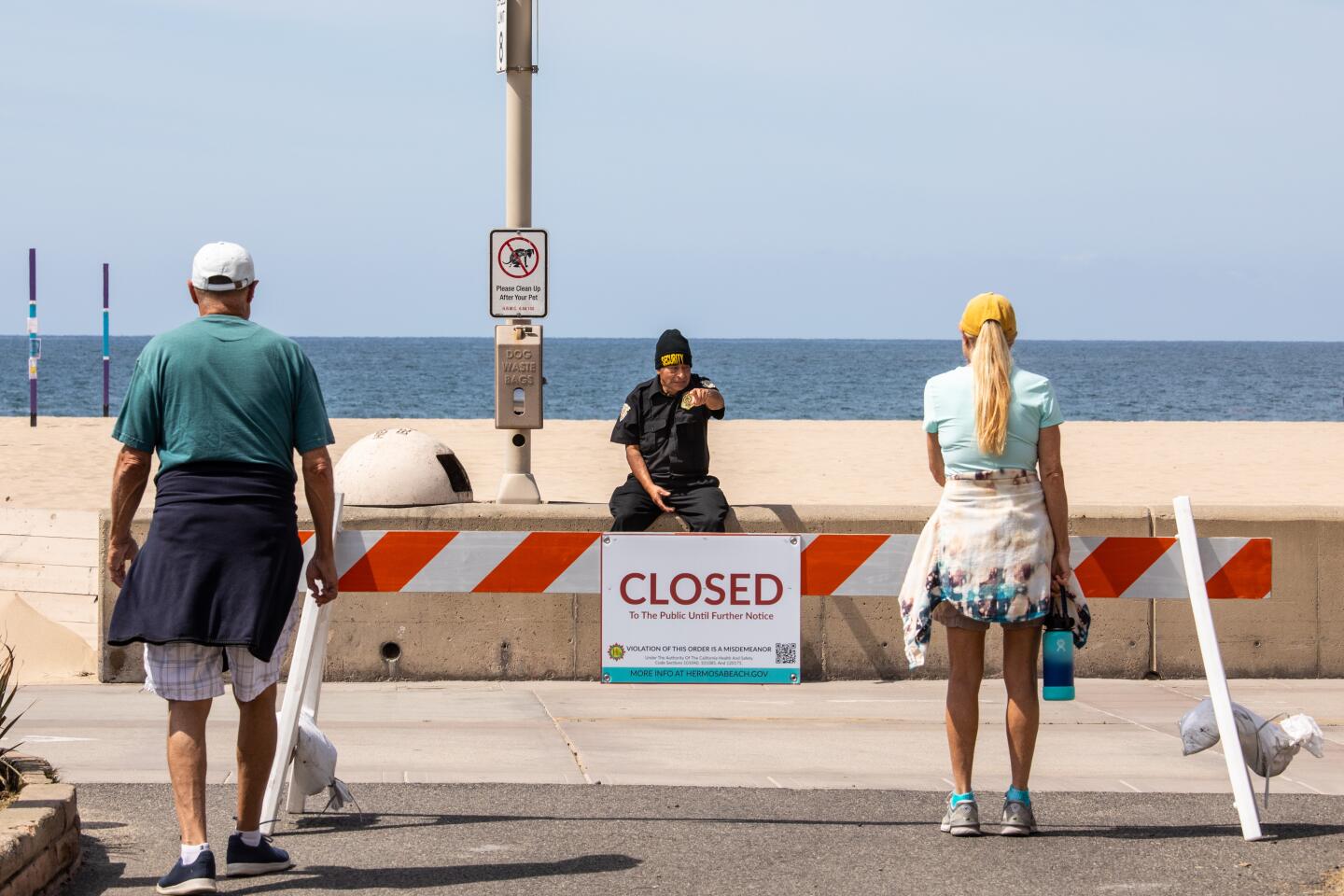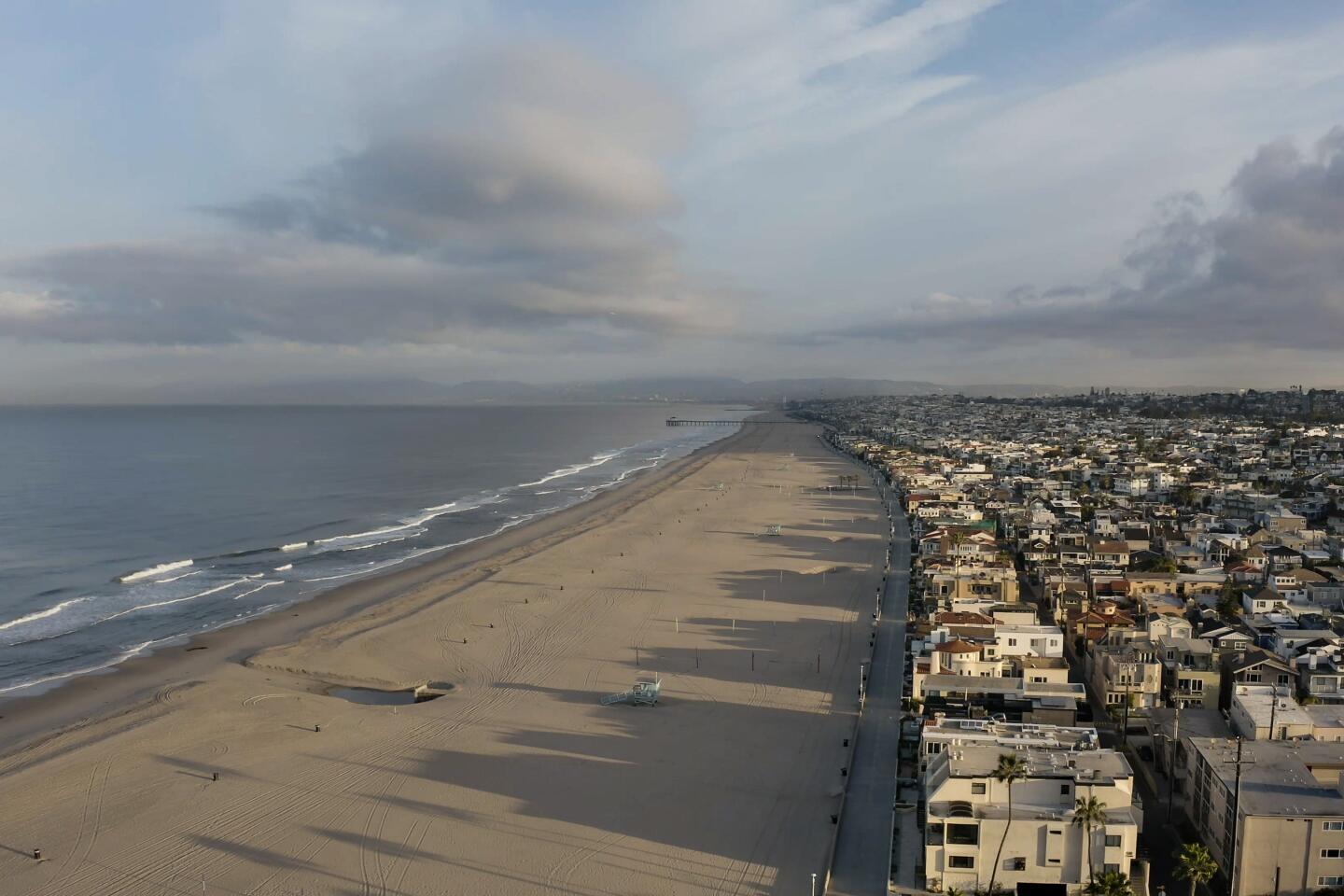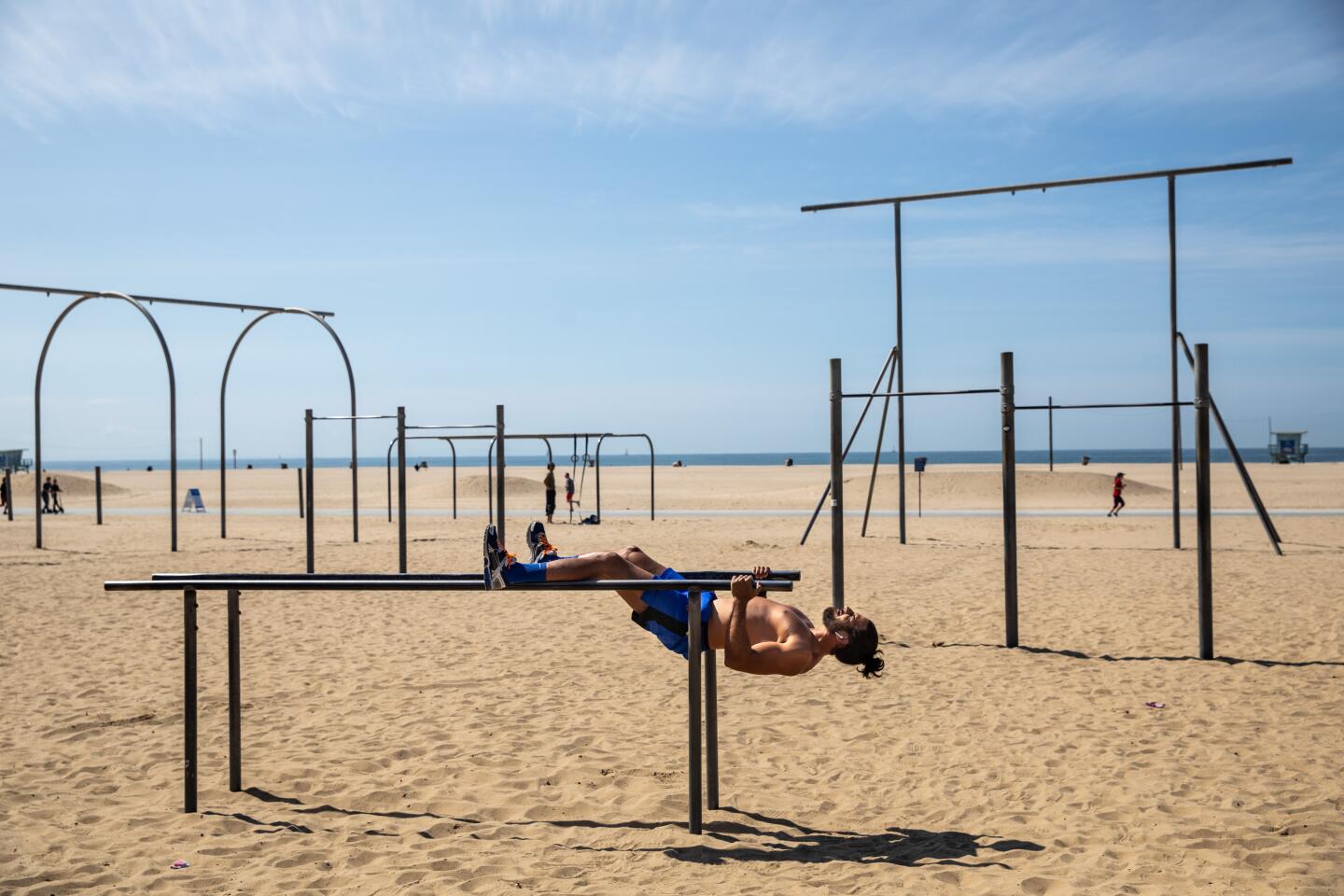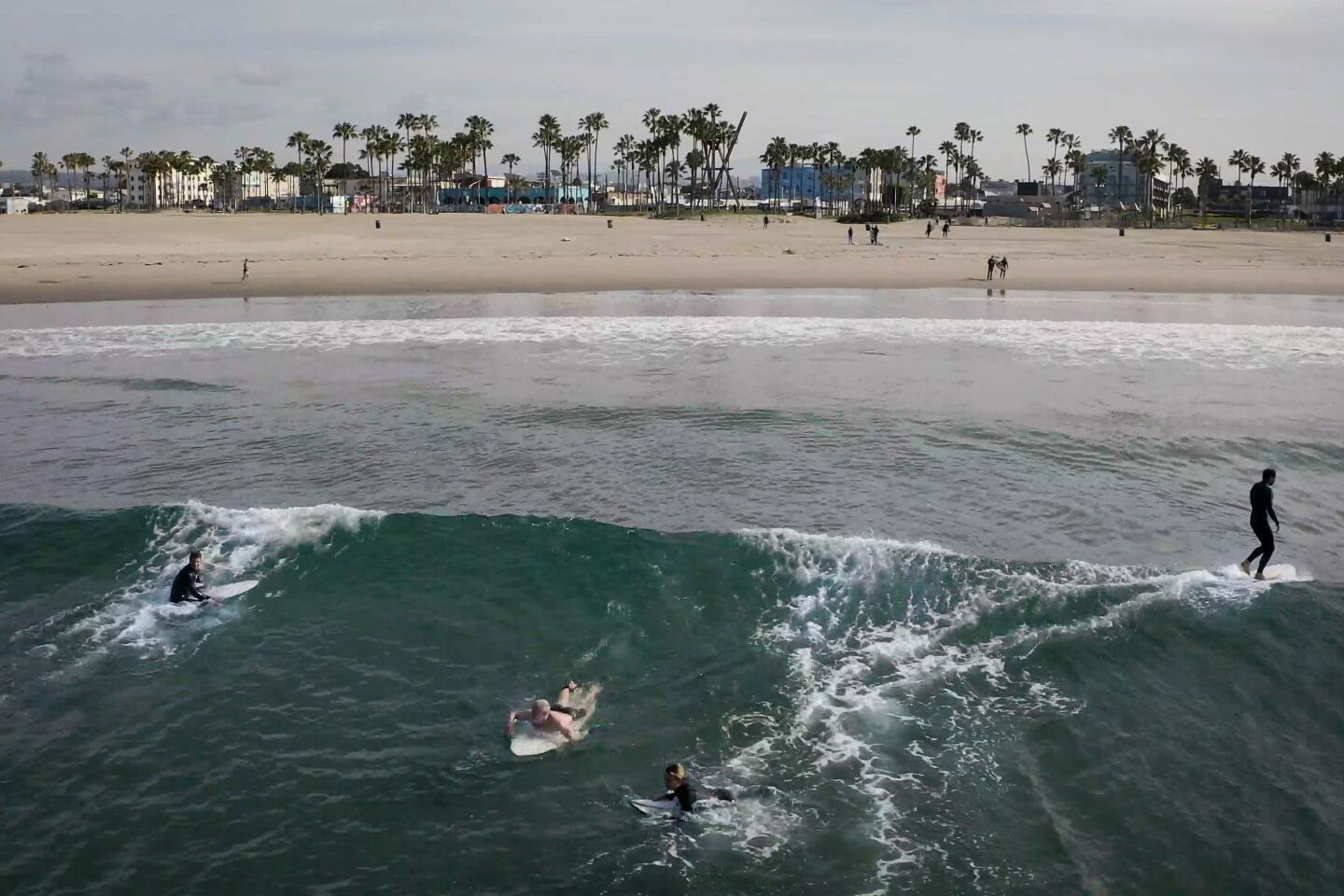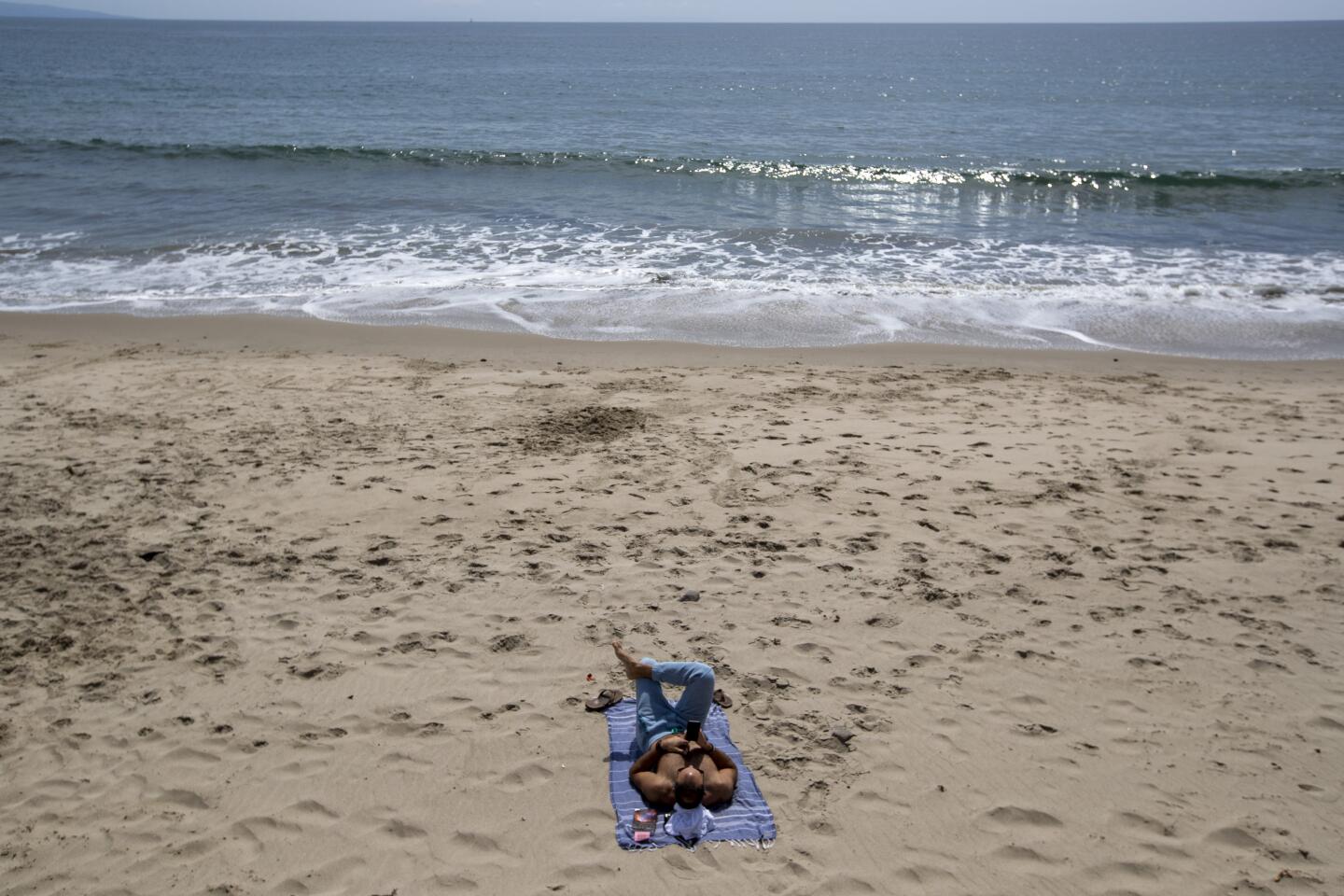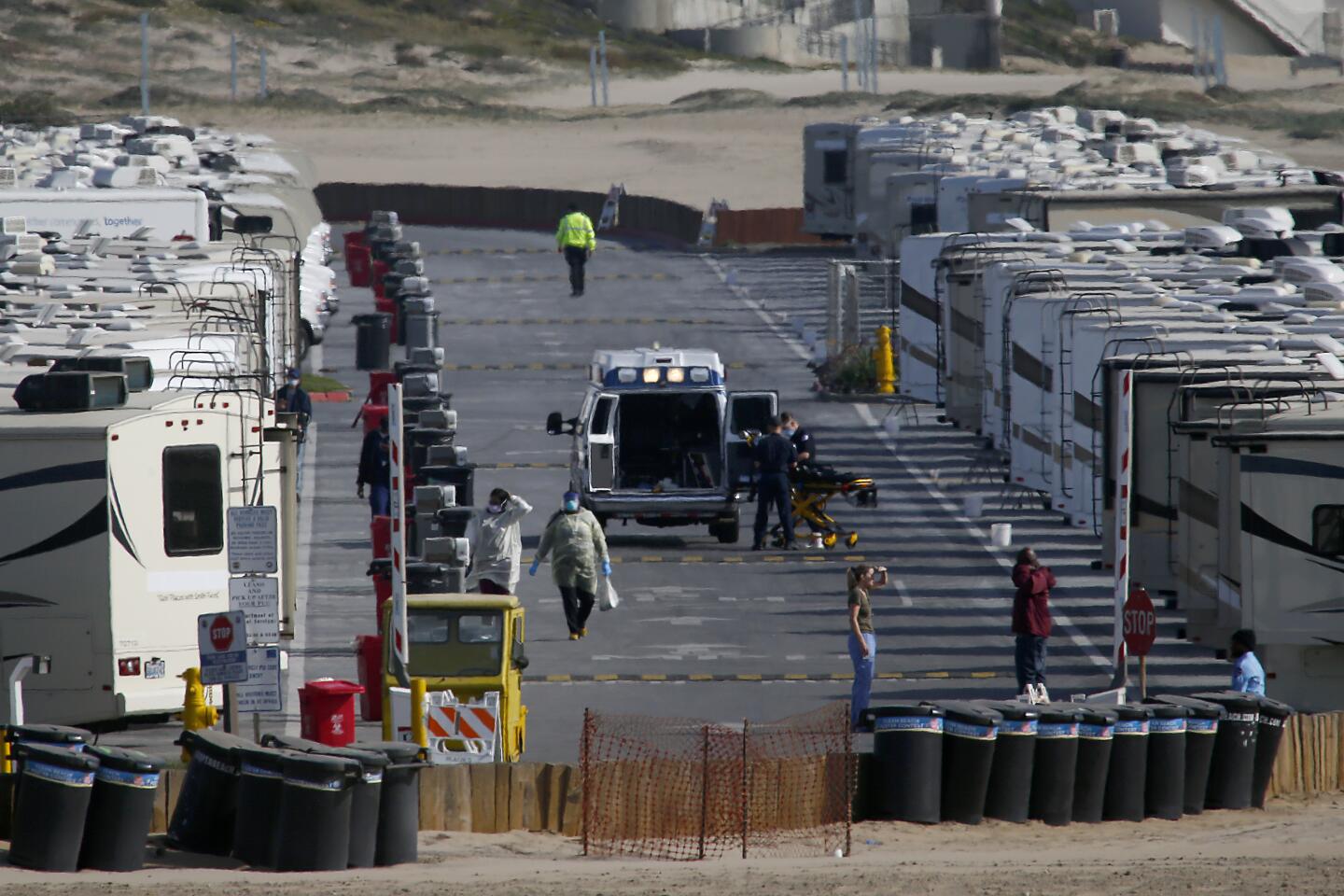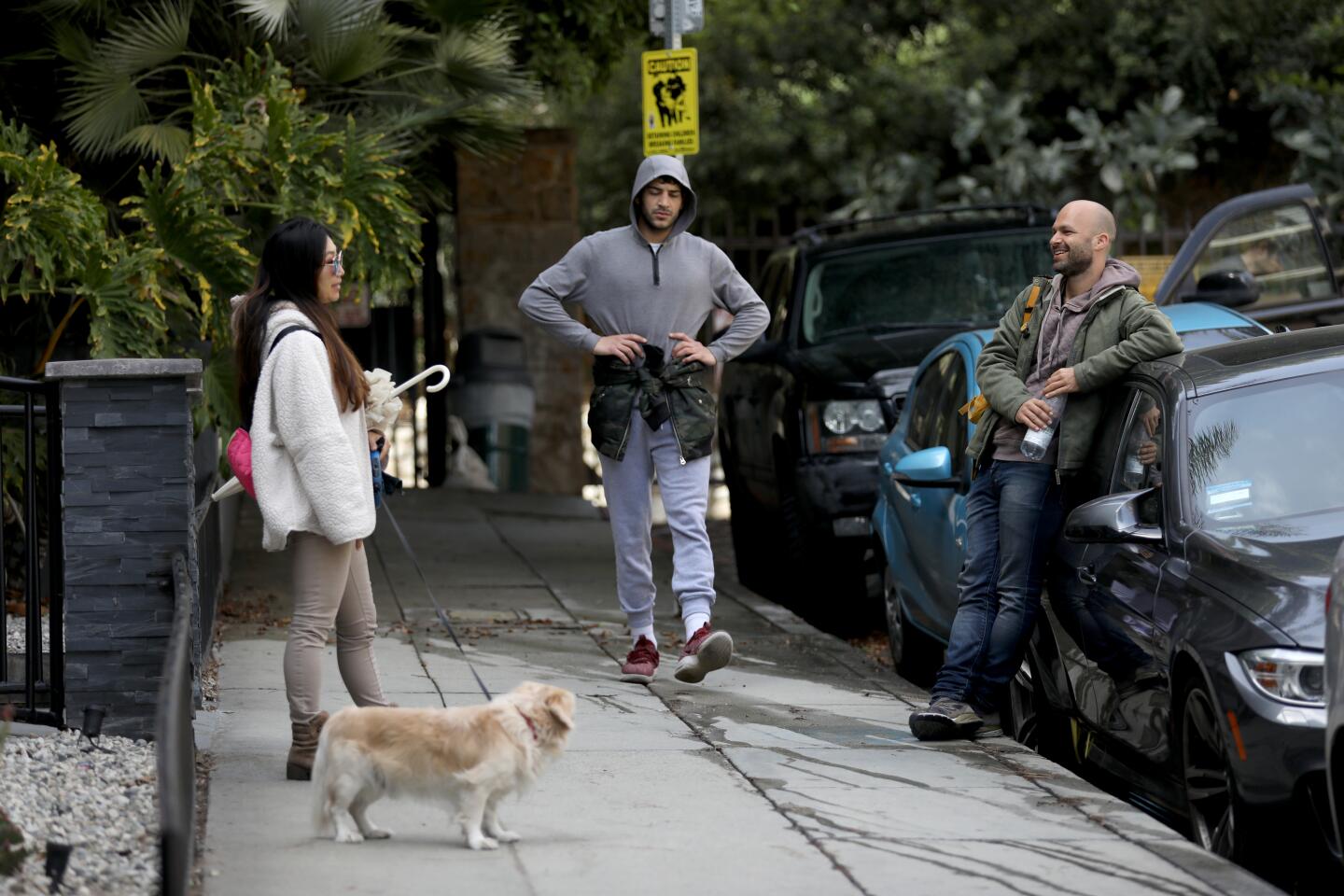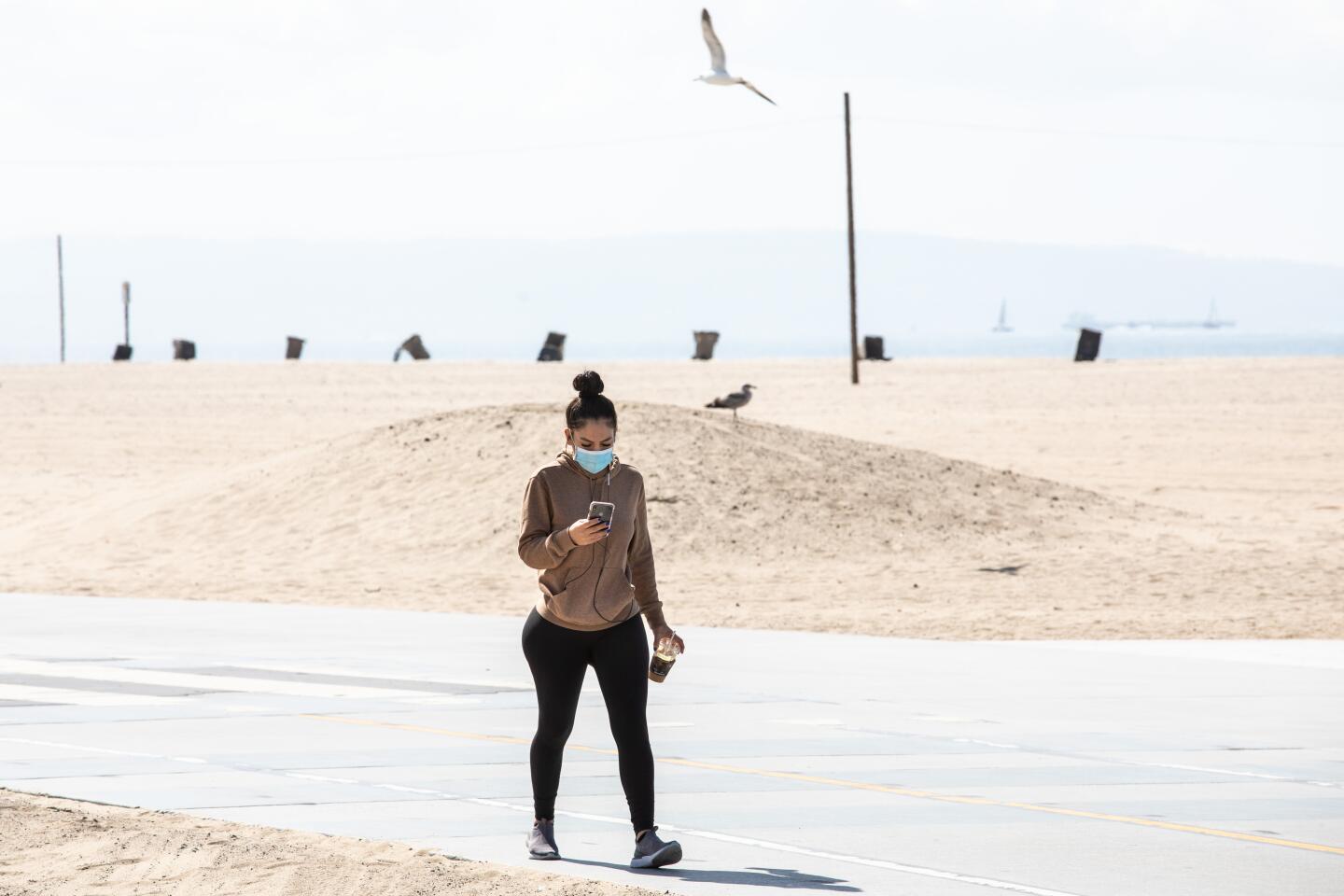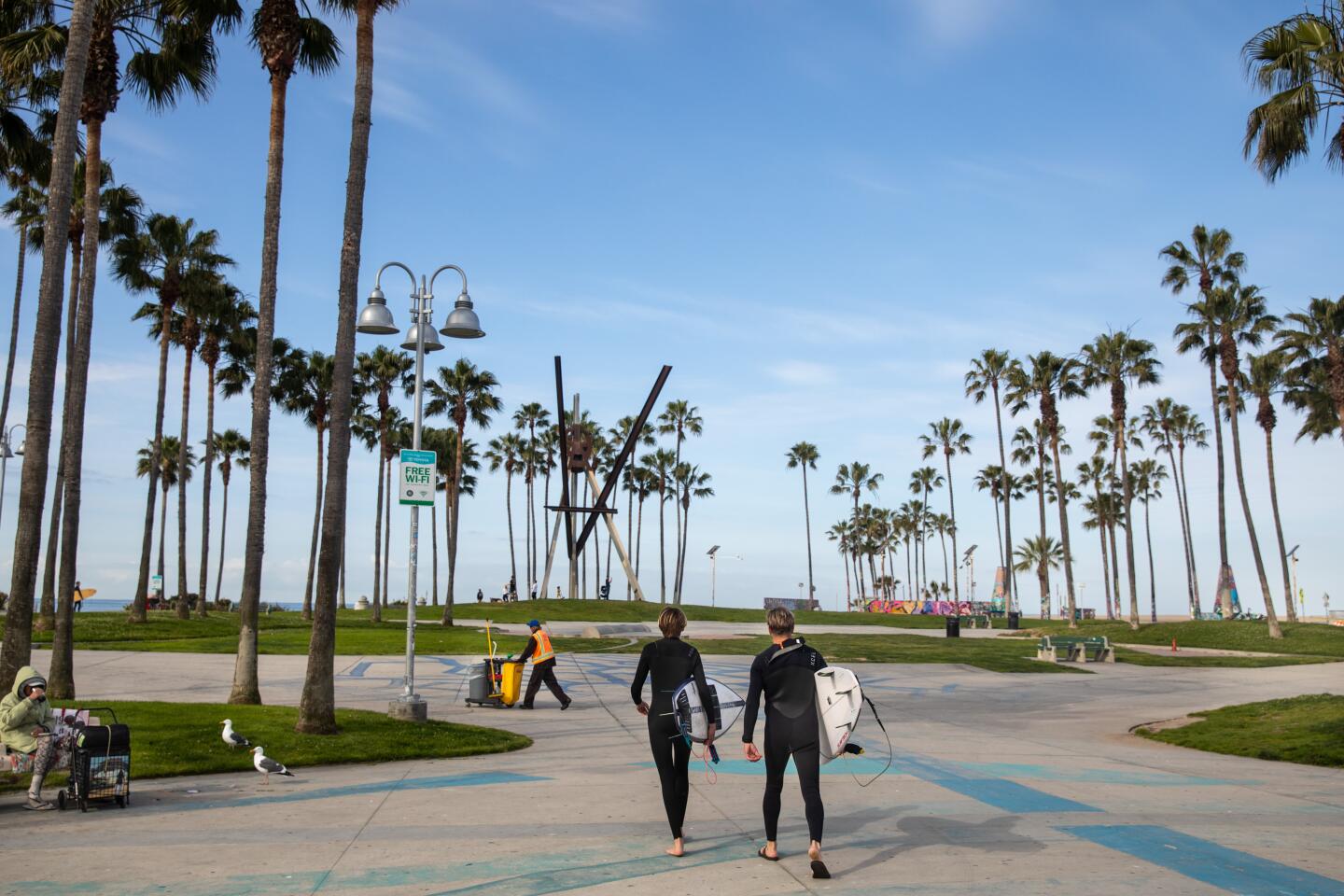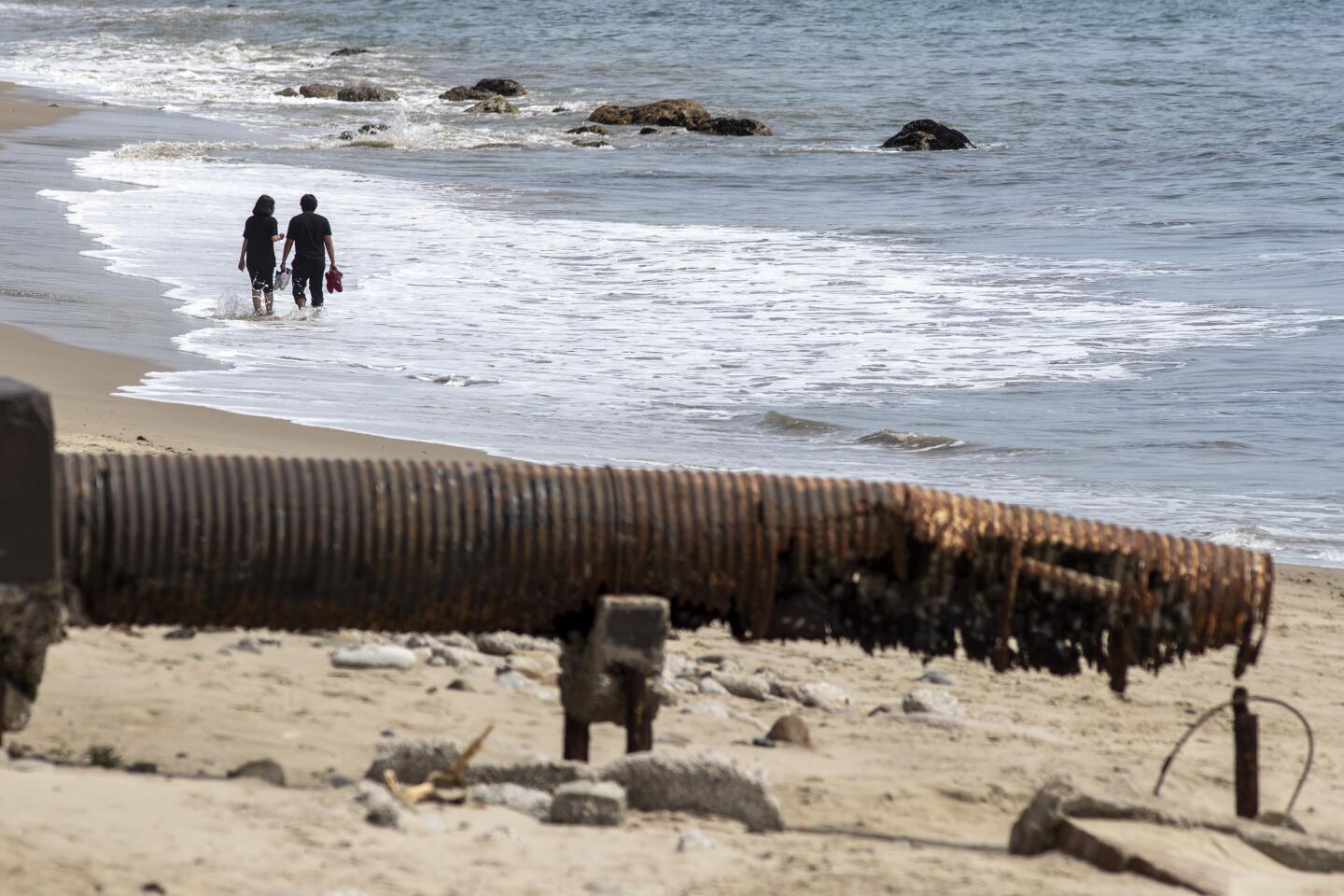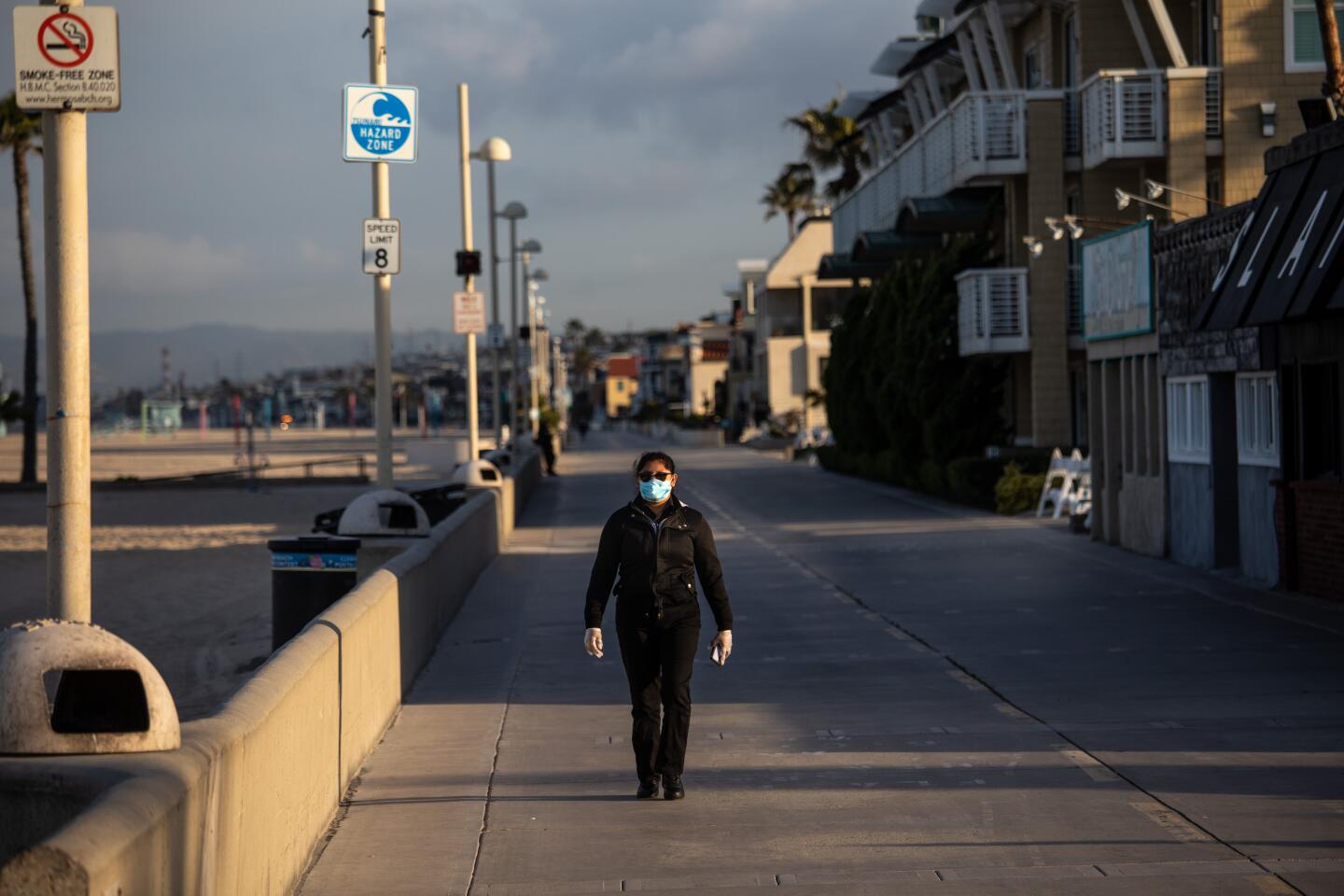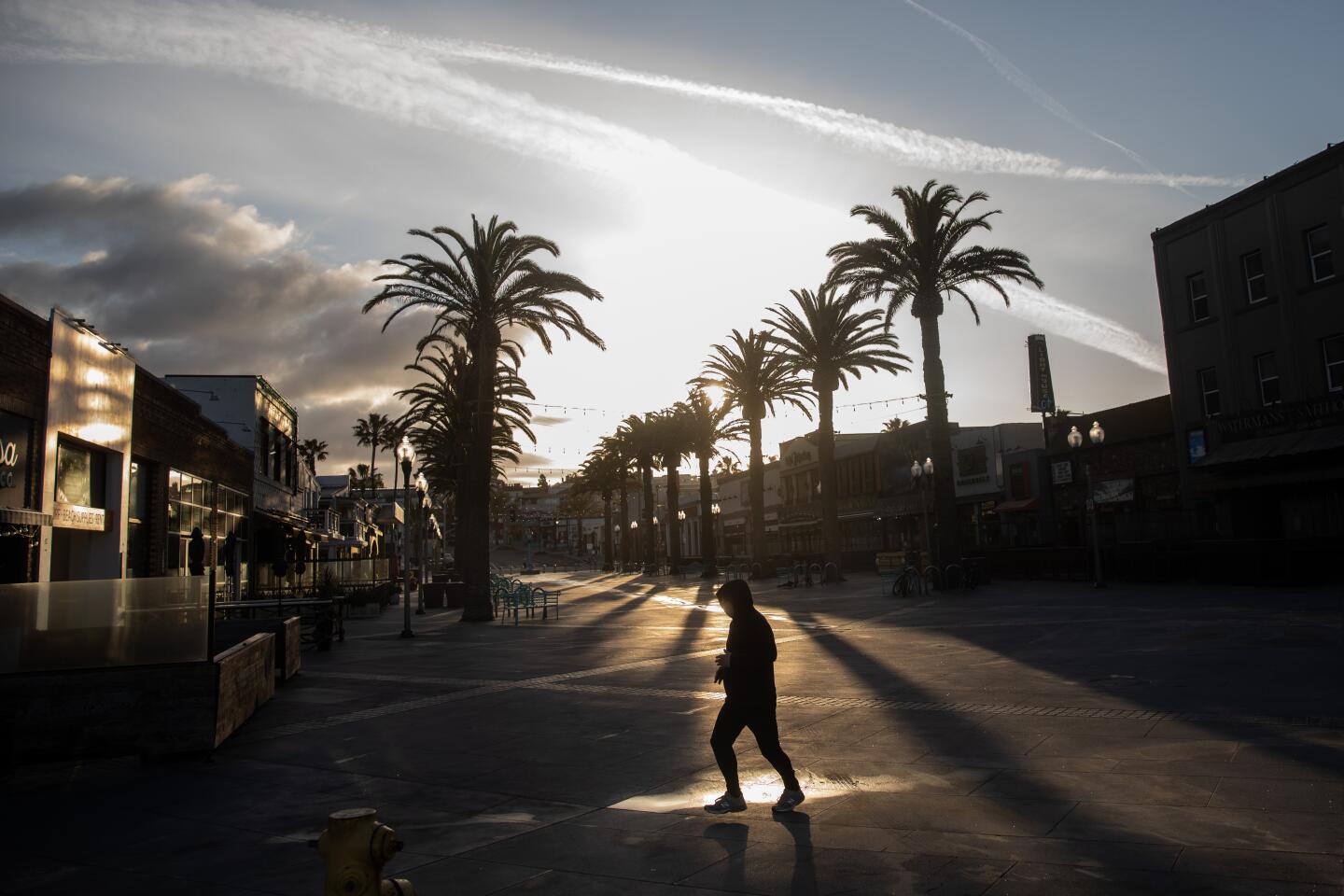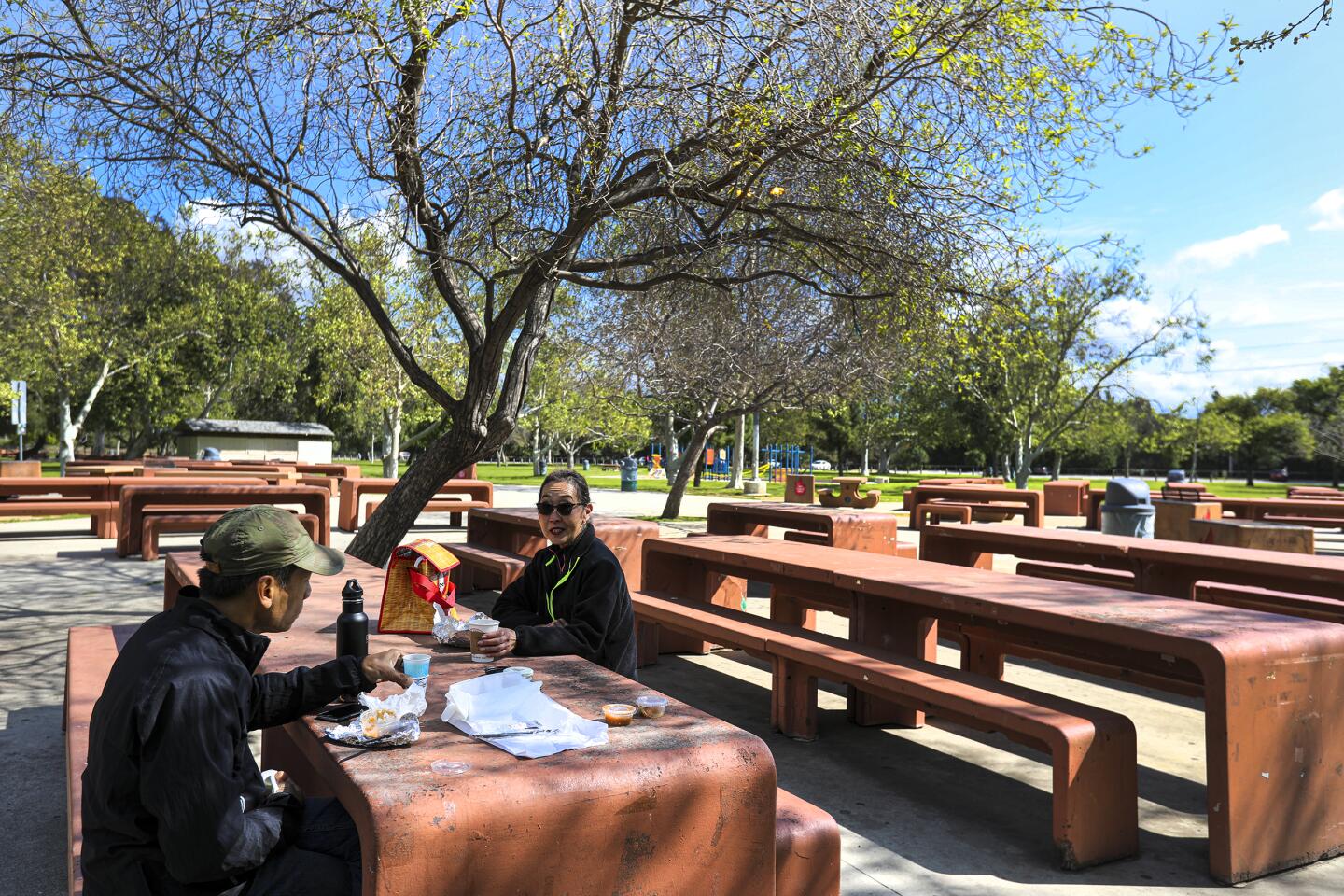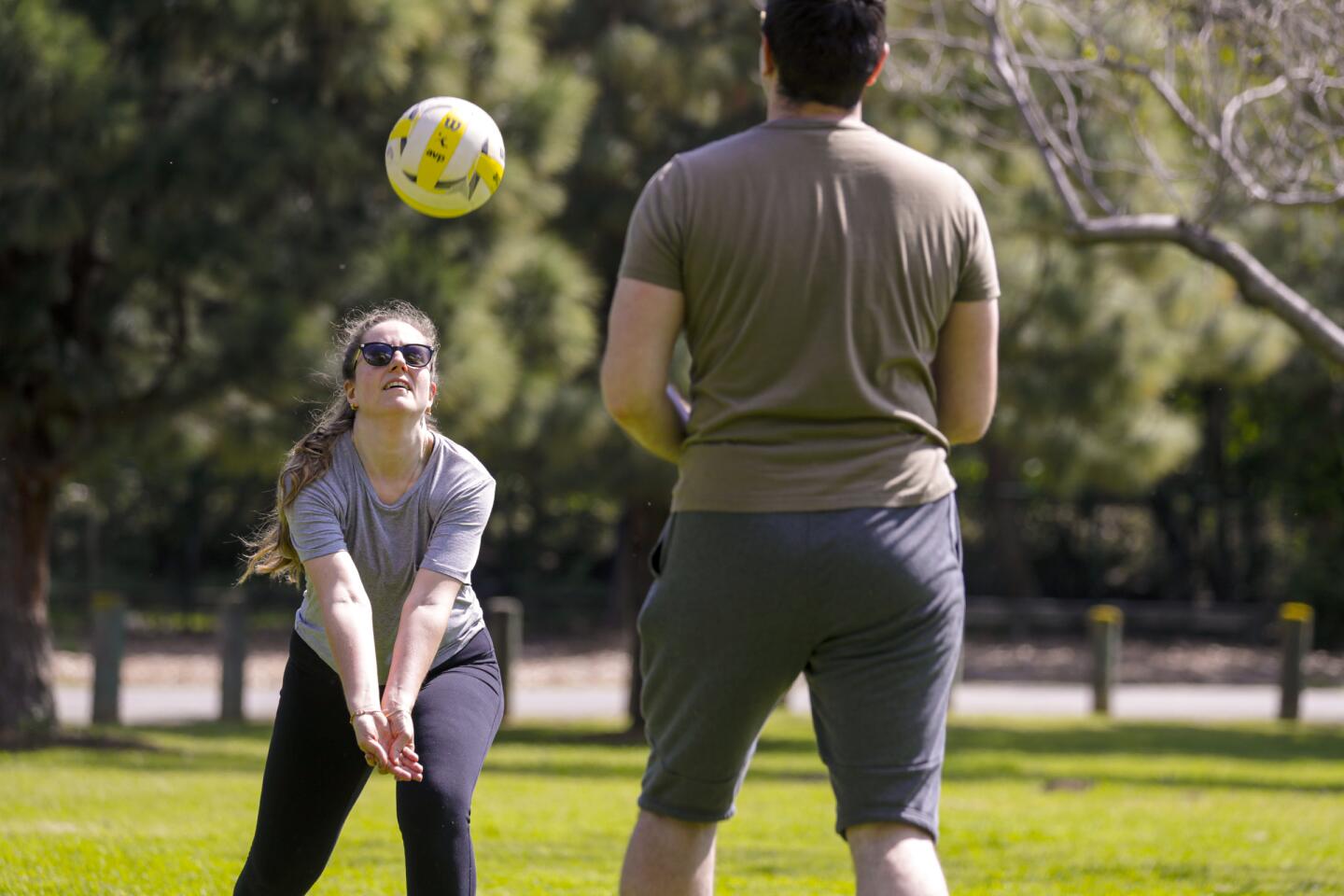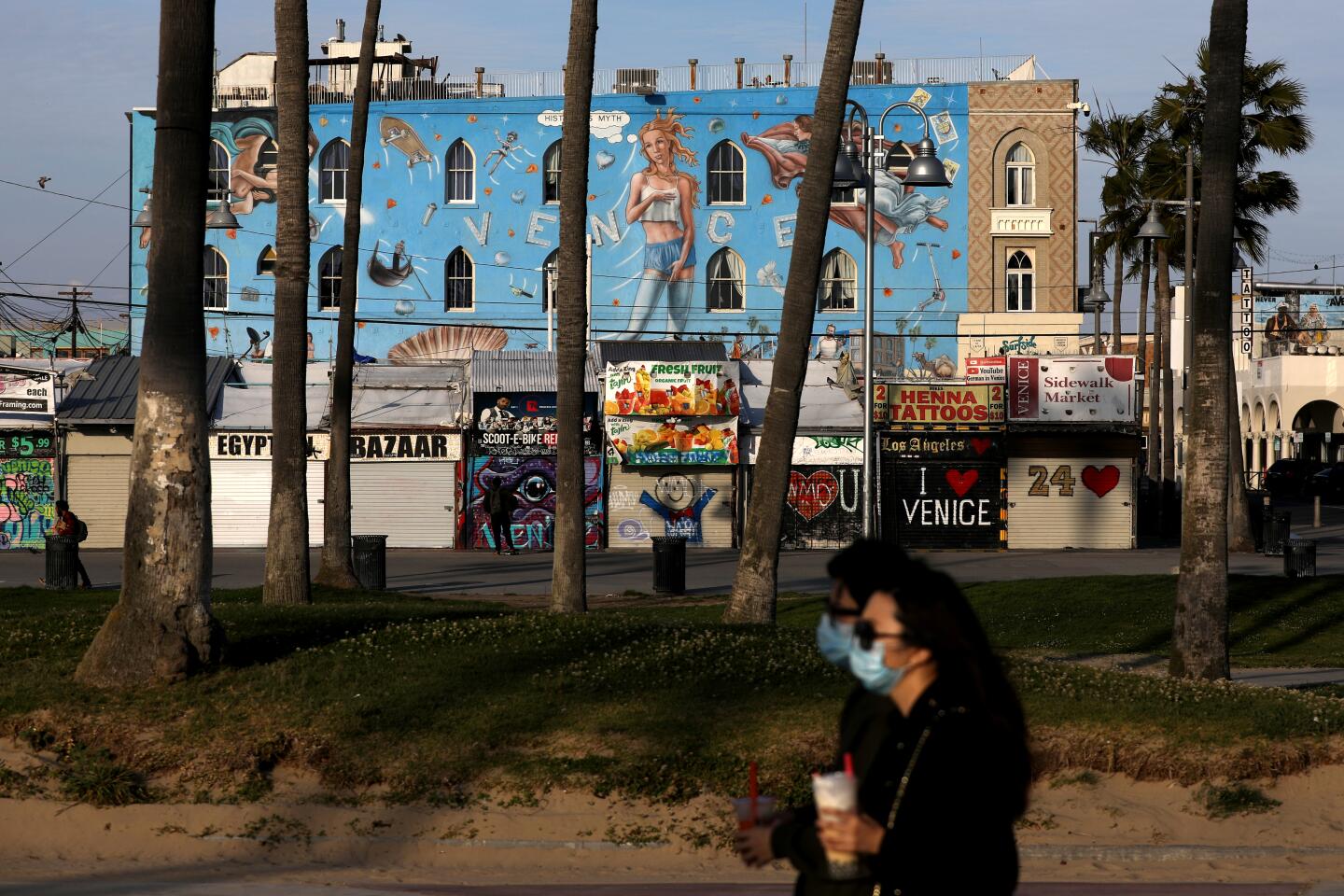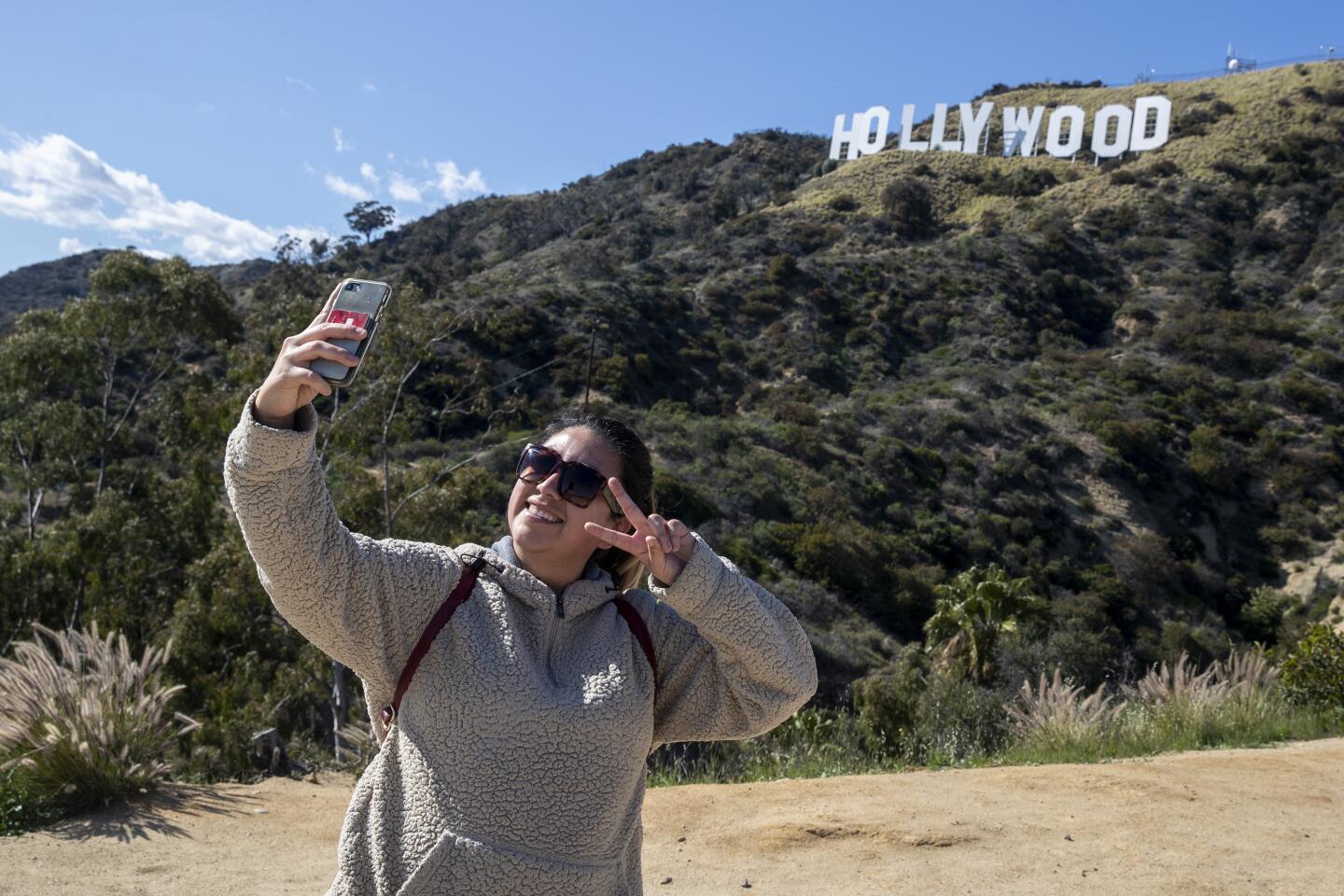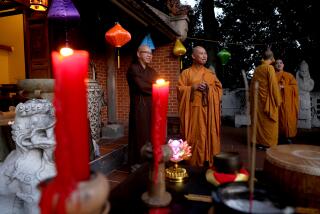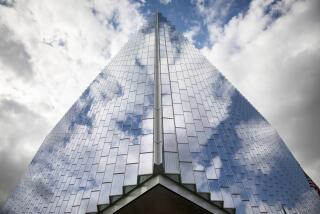5 more coronavirus deaths in L.A. County; total cases top 2,100
- Share via
Los Angeles County recorded five more coronavirus deaths on Sunday, bringing the total to 37 as the virus continued to spread.
The county now has 2,100 total confirmed cases, including more than 300 reported on Sunday. More cases and deaths were reported across California, with officials warning the numbers will spike in the coming weeks.
Meanwhile, hospital ICU beds began filling up with patients, and officials tried to enforce unprecedented social distancing measures, which they believe are the state’s best chance to slow the spread of the coronavirus.
“I ask that everyone please do your part to not infect others or become infected yourself by adhering to the public health directives and practicing social distancing,” Barbara Ferrer, L.A’s public health director, said Sunday.
Los Angeles Mayor Eric Garcetti announced Sunday that the city — with the help of the National Guard — is turning its convention center in downtown Los Angeles into a field hospital in an effort to relieve pressure on local hospitals. The federal medical station will be run by the U.S. Department of Health and Human Services, Garcetti said.
It is not yet clear how many beds the convention center’s field hospital will provide or when it will begin accepting patients.
The city has also opened five new emergency shelters to move homeless people indoors. In all, there are now 13 emergency shelters with 561 beds, with most at or near 100% capacity, according to city officials.
The Los Angeles Fire Department administered 6,741 COVID-19 tests over the past week, Garcetti said, and the city is rapidly ramping up its testing efforts.
Mercy accepting first patients
“We feel confident that we will double that pace this week and have triple the number by next week — 13,000 tests completed — with a quick turnaround time of one or two days,” the mayor said.
Garcetti commended the federal government for extending its social distancing guidelines, which had been set to expire or be renewed on Monday, to April 30.
“I hope that the Trump administration will take the further step of requiring all states to adopt the same safer-at-home measures that we’ve adopted here,” Garcetti said.
On a sunny Southern California weekend, beaches, hiking trials, recreation areas and many streets were empty amid calls for people to stay home except for essential trips and exercise in their neighborhoods. Police were out in force, turning away people trying to use closed facilities.
Most beaches, trails, recreation facilities and nonessential businesses were closed because of the state and local orders, and many obeyed.
Santa Monica Beach would normally be packed on a cloudless weekend with surfers, swimmers and sun lovers. But it was mostly deserted Sunday because of the stay-at-home orders.
A lone lifeguard truck patrolled the area to ensure people stayed off the beach.
Not everyone heeded the warnings.
In a nearby parking lot, two surfers consulted with another wave rider who had just come ashore about their chances of getting into the water.
“I went for a paddle to the pier and back,” he told them. “They weren’t citing anyone.”
In Manhattan Beach the day before, a man received a $1,000 citation for surfing in a restricted area after he ignored numerous warnings by police and lifeguards cautioning him not to go in the water, Manhattan Beach police Sgt. Mike Sistoni said. It was the only citation for failing to follow the stay-at-home orders the department had issued, he said.
“Everybody else was in compliance,” Sistoni said Saturday. “People have been pretty good about it.”
In Santa Monica on Sunday, runners and bikers — some in gloves and masks — traversed a bike path that runs along the beach but kept their distance from one another.
Later, a city police officer in a pickup truck reminded everyone that the usually bustling pathway was closed. But it didn’t deter many from using it.
Los Angeles Times’ visual coverage of the coronavirus crisis
The entrance to Santa Monica Pier was blocked off by tape and temporary fencing. Sean Golden, 54, stared at his 18-year-old dog, Woody, as the pooch rolled in the grass.
Normally they would amble across the pier and then back down to Sea Mist Rentals, where Golden works. Not today, though.
Golden, who has lived in Santa Monica since the early 1980s, has worked at the shop for about 20 years. He said he hadn’t seen the beach this desolate since 1983, when heavy storms destroyed the pier.
Even after 9/11, people were out and about enjoying the beach, he said.
“We need to get it up and running soon,” he said.
Some state parks were up and running Saturday. Many had closed to vehicle traffic, but those that remained open “once again experienced visitation surges that made it impossible for the public to implement appropriate social/physical distancing practices,” California State Parks said in a statement.
As a result, the state parks system on Sunday announced it was temporarily cutting off vehicle access to all 280 parks.
The increasing restrictions on public spaces are intended to slow the spread of the virus so California’s healthcare system isn’t overwhelmed by a sudden surge in hospitalizations.
There were signs Saturday that hospitals were beginning to feel the coronavirus strain.
The number of COVID-19 patients in California’s intensive care unit beds doubled overnight, rising from 200 on Friday to 410 on Saturday, Gov. Gavin Newsom said. And the number of hospitalized patients testing positive for the respiratory disease caused by the coronavirus rose by 38.6% — from 746 on Friday to 1,034 on Saturday, Newsom said.
“We’re blessed that we’re just at 410, devastating for the individuals there and their family members and loved ones,” Newsom said at a news conference in Sunnyvale on Saturday. “But by comparison and contrast to other parts of this country, that number seems relatively modest.”
A Los Angeles Times data analysis found that California has 7,200 intensive-care beds across more than 365 hospitals. In total, the state has more than 70,000 beds. The Times data analysis shows roughly one intensive-care bed for every 5,500 people in California.
About half of California’s total intensive-care beds — 3,700 — are in the five-county area around Los Angeles, according to data from 2018, the most recent available. In the nine-county Bay Area, there are roughly 1,400 ICU beds for a population of 7.6 million people.
Intensive-care beds allow for a higher level of treatment than regular beds, a level of care some COVID-19 patients require. Those unable to breathe properly may need a breathing tube inserted into their throat and to be hooked up to a ventilator, which physically pushes oxygen into the lungs.
The Navy hospital ship Mercy, which docked at the Port of Los Angeles on Friday, began receiving patients Sunday. The boat is operated by Naval medical and support staff from 22 commands, along with 70 civil mariners, who will treat patients who don’t have COVID-19 in order to help reduce strain on the hospital system.
There were three patients aboard the ship as of Sunday afternoon.
“The men and women embarked on board Mercy are energized, eager and ready to provide relief to those in need,” said Capt. John Rotruck, Mercy’s Military Treatment Facility commanding officer, in a press release.
In San Bernardino County, 12 people at a Yucaipa nursing facility tested positive for the virus Saturday after a resident of the facility died of COVID-19 earlier in the week, county health officials said. At least one of the people who tested positive worked at the facility, which officials did not immediately name.
The 89-year-old woman had underlying health conditions and died Thursday, officials said.
In addition, a resident of a second Yucaipa nursing facility has symptoms of the illness, officials said. County public health staffers are working with both facilities to expedite testing of all residents and employees, they said.
“This is the first instance we have had in our county of a concentrated COVID-19 outbreak,” said Erin Gustafson, acting county health officer, in a statement. “The county will do everything within its ability and authority to minimize the tragedy this pandemic has the potential to create in our communities.”
The L.A. County Department of Public Health is monitoring 14 institutional facilities that have reported one or more confirmed cases of the virus among residents and staff, including three extended-care homes that have reported three or more cases, officials said Friday.
Another point of concern is that the virus could spread through the state’s homeless population. Many cities and counties have taken steps to identify places where homeless people can safely shelter during the outbreak.
In Long Beach, city officials hope to eventually have up to 1,000 beds available.
Although the process to locate enough shelters and beds is still in its early stages, the county has extended by six months its support for a winter shelter that’s been open since December. The facility will now remain open through the end of September, said Teresa Chandler, Long Beach’s interim deputy city manager.
The shelter’s original location had 125 beds, but physical distancing requirements for the virus have forced the city to close the site and redirect 80 of the occupants to its new location at a library in north Long Beach and the remaining 45 to a shelter in Silverado Park.
The park location has 70 beds available, with 20 of those in a separate area that could be turned into an isolation space if occupants show COVID-19 symptoms, Chandler said.
“We’re doing one or two locations at a time because of our logistics,” Chandler said. “We have to figure out staffing and transportation.”
Another Long Beach shelter is expected to open this week, but details on how many beds it would hold were not immediately available.
Meanwhile, a growing number of coronavirus cases have been reported among first responders and inmates in Southern California.
A total of 24 Los Angeles police employees have tested positive, along with six Los Angeles firefighters. “All of these individuals are self-isolating at home and recovering,” according to a city statement.
One Long Beach police officer and 13 Long Beach firefighters also had tested positive as of Friday.
The Riverside County Sheriff’s Department said Saturday that two more of its deputies had tested positive, bringing the total to three.
The department also was notified that the first Riverside County Jail inmate had tested positive for the virus, Sheriff Chad Bianco said in a video statement. The inmate became symptomatic “several days ago” and was isolated and treated, Bianco said. He had little contact with other inmates, but some others are isolated; none are symptomatic, Bianco said.
Bianco said the county’s jail system had a strategic plan in place to contain and limit the virus’ spread.
“Unlike some jurisdictions, I have no intention of preemptively releasing inmates out of fear something may or may not happen,” Bianco said. “I feel very strongly that the inmates we have remaining in custody pose a much greater risk to public safety than the risk this virus poses to them while they are in custody.”
Earlier Saturday, Orange County Sheriff Don Barnes announced that he would soon begin releasing inmates who had 60 or fewer days left on their sentences in an effort to reduce the population of the Men’s Central Jail in Santa Ana, according to City News Service. Earlier in the week, an inmate in his 40s was placed in isolation after testing positive for the coronavirus, the Sheriff’s Department said.
Times staff writer Richard Winton contributed to this report.
More to Read
Sign up for Essential California
The most important California stories and recommendations in your inbox every morning.
You may occasionally receive promotional content from the Los Angeles Times.
